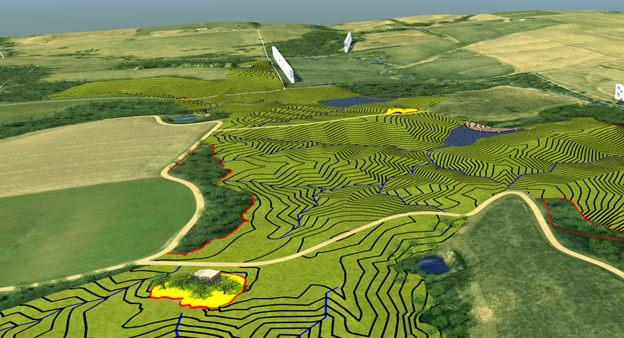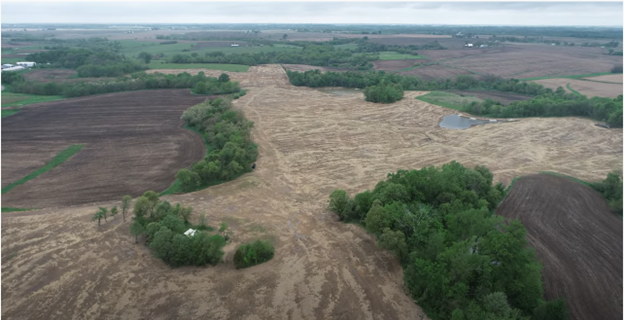The volume of abandoned mine land (AML) work scheduled over the next decade will require site owners and operators to embrace emerging technologies to manage data, develop designs, and document reclamation more efficiently. As technology evolves, there are opportunities for every site to consider, from those just starting their digital journey to those already enjoying its efficiencies.
5 ways to improve AML project management using technology
1. Build a better database
Foundation is key, and effectively using technology begins with capturing and storing AML site inventory data in an accessible digital repository. Maintaining an accurate, reliable, and accessible inventory has always been important, but the injection of Infrastructure Investment and Jobs Act (IIJA) funding is placing a renewed emphasis on AML program inventory data. Feeling confident in your database should be the first step; without a reliable database to document, update, and report on AML sites, leveraging the IIJA funding to its fullest may be difficult.
2. Rise to the occasion with unmanned aerial systems (UAS)
Yes, inventories can be completed through desktop reviews and via boots on the ground—and there are plenty of sites where that makes sense. However, be sure to explore UAS for larger or more complex data gathering needs. In addition to construction support, UAS can easily and safely identify priority features, collect topography, and document hazardous features.
3. Explore machine learning (ML) and artificial intelligence (AI)
ML tools, trained using existing data sets, can help identify AML sites and delineate hazardous features. As ML tools receive and digest more data, they can play a critical role in predicting site success and identifying high-risk sites for funding. Meanwhile, AI can lend new project perspectives. In a recent project, we used 3D modeling and AI to incorporate wildlife habitats into an AML site’s grading plan. Combining environmental data with the project boundary and volume of grading material, we applied AI to develop a grading plan that increased the likelihood of habitat success. The AI balanced the habitat earthwork using a grading optimization tool and analyzed 30,000,000 surface points within a 10-mile radius to provide species-specific perspectives of the site plan.
4. Visualize success with 3D models
Build your site digitally with 3D representations of your project. Building a digital model improves collaboration among the team and allows stakeholders and regulators to visualize alternatives to quickly arrive at the preferred solution.
5. Employ enhanced software
Software built specifically for your program needs can be used to efficiently manage site construction activities, including using GPS-guided equipment, managing sample data, maintaining regulatory compliance, and reporting daily reclamation activities from a single centralized data environment.
Project spotlight: Technology driving progress
.jpg?sfvrsn=99107d6e_2)
At the Waechter AML site, pre-construction UAS technology captured aerial imagery, verified LiDAR, and supplemented construction quantities. UAS flight video was incorporated into a digital site walk-through for stakeholders.

A 3D model of the Waechter AML project illustrated the grading plan to the three landowners, allowing them to engage with project decisions. The 3D model was also used in the pre-bid meeting to quickly onboard contractors with the project plans. Building the site digitally first resulted in a project that met contractor, client, and landowner expectations.

The as-built survey for the Waechter AML project was collected using UAS, which decreased the amount of time the contractor spent on-site and reduced engineer processing time while providing the client with topographical information that included aerial imagery and a fly-through video for public outreach.
IIJA funding update
IIJA provides $11.3 billion in AML grant funding over 15 years (approximately $725 million per year).
In July 2022, the Office of Surface Mining Reclamation and Enforcement (OSMRE) released final guidance on how funding will be implemented. The guidance document covers eligible projects and prioritization, how IIJA funding differs from traditional fee-based AML funding, funding administration, information to include in grant applications, National Environmental Policy Act (NEPA) considerations, and AML performance measures grant recipients are expected to track and report.
In August 2022, OSMRE released the Notice of Funding Opportunity for FY2022.
Connect with us
As a leader in applying emerging technologies to AML site management, Trihydro is available to assist you in applying the right mix of technologies, tools, and methodologies to elevate your site understanding and AML project management. We are also prepared to support you in improving inventory data, which can translate into receiving a larger grant funding allocation. Connect with us using the form linked below so we can learn more about your goals.
